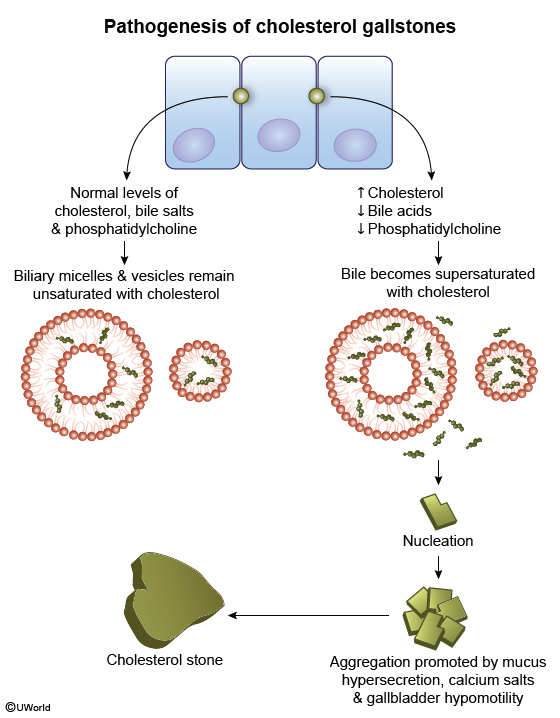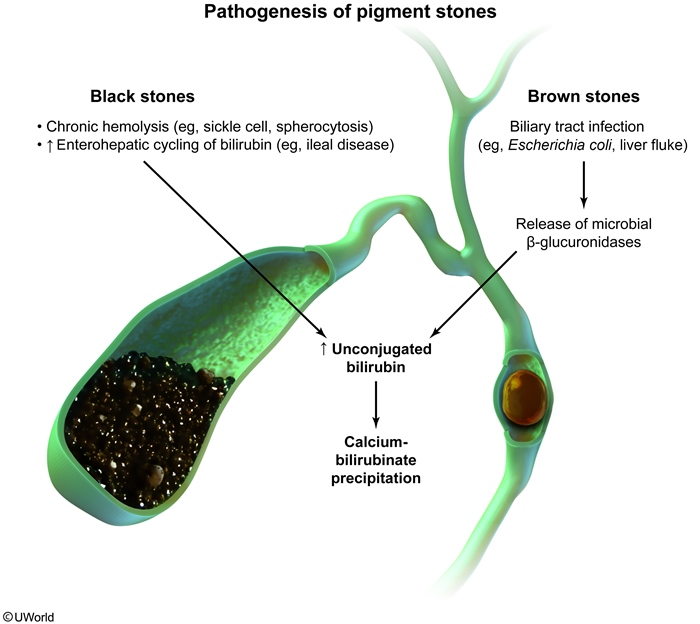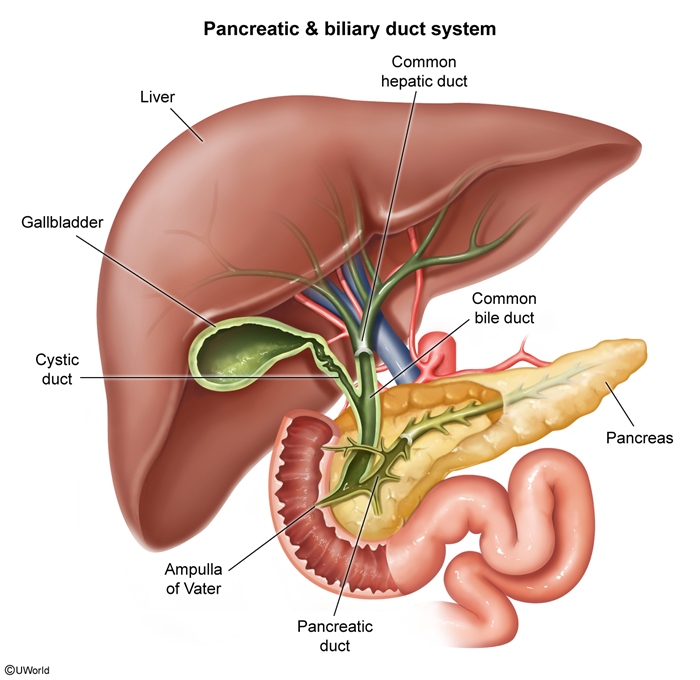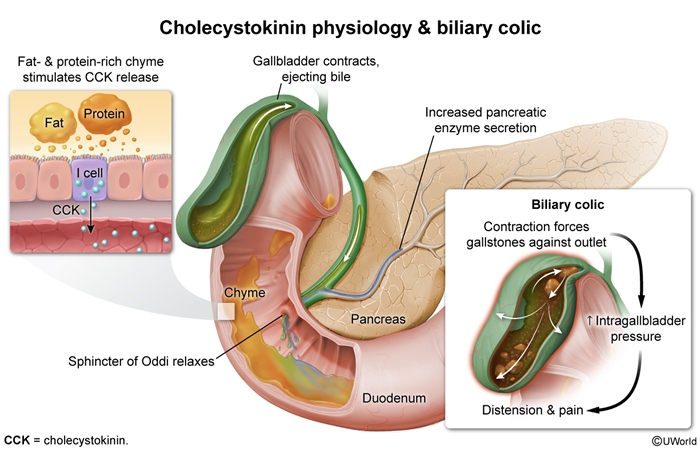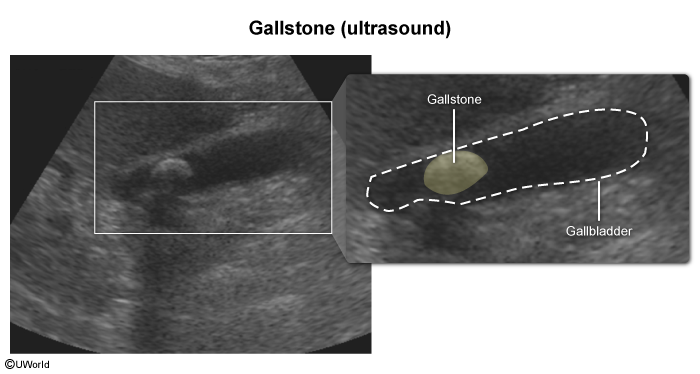Gallstone Disease: Cholelithiasis, Choledocholithiasis, Cholecystitis, Cholangitis, And Others
Article Sections
Introduction
Gallstone disease encompasses a spectrum of biliary tract disorders caused by the formation and migration of gallstones, which can lead to a variety of clinical presentations. Gallstones are caused by precipitation of substances (usually cholesterol or bilirubin) that form stones within the gallbladder or bile duct system. This leads to various conditions such as cholelithiasis, choledocholithiasis, cholecystitis, cholangitis, and gallstone pancreatitis. These conditions arise due to direct mechanical obstruction of bile outflow or the ensuing inflammatory response. The clinical syndromes associated with gallstone disease have many overlapping features; however, identifying the differentiating characteristics will help guide the correct diagnosis and treatment.
Pathophysiology
Gallstones form through the precipitation of bile components, primarily cholesterol, bilirubin, and bile salts. The key pathogenic mechanisms involve bile supersaturation by cholesterol or bilirubin and impaired gallbladder motility (resulting in bile stasis), which alters conditions to promote stone formation.
Continue Learning with UWorld
Get the full Gallstone Disease: Cholelithiasis, Choledocholithiasis, Cholecystitis, Cholangitis, And Others article plus rich visuals, real-world cases, and in-depth insights from medical experts, all available through the UWorld Medical Library.
Figures
